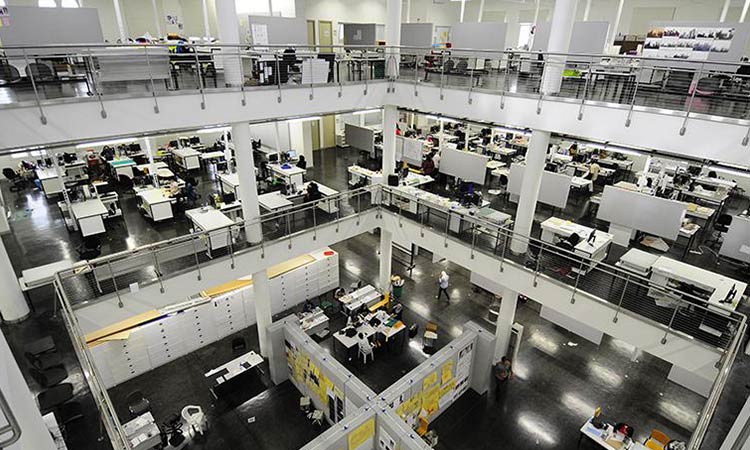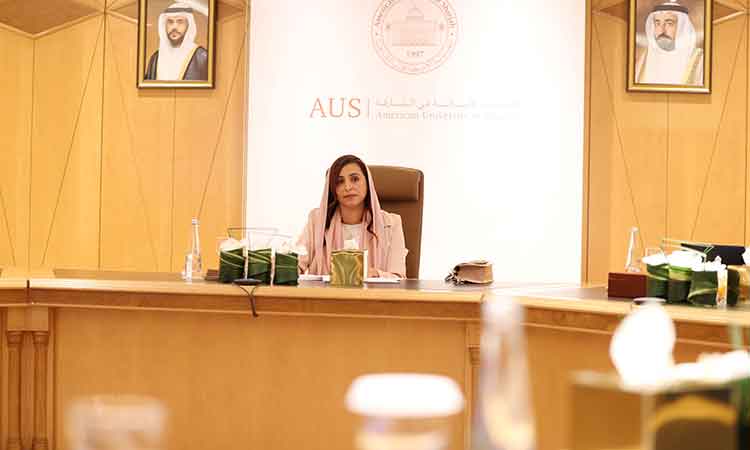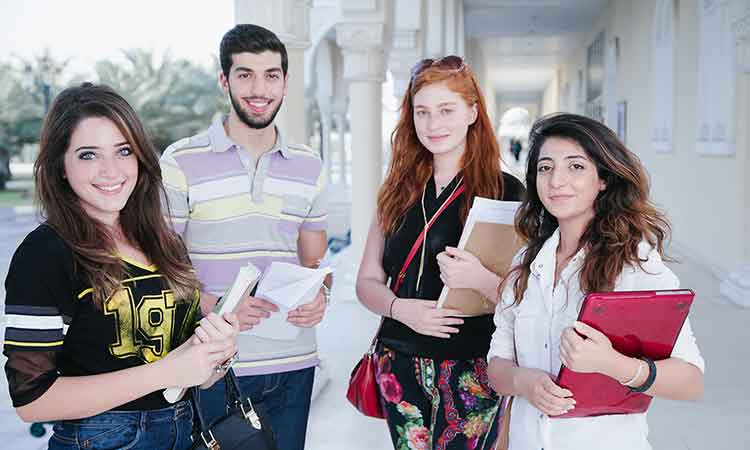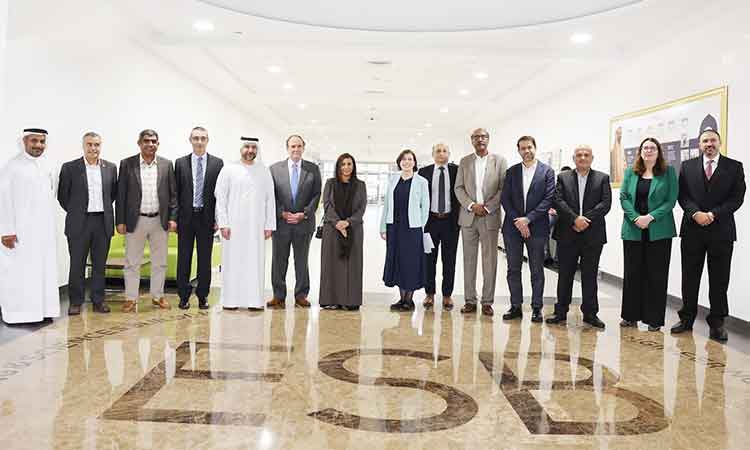AUS CAAD students design virtual reality models and real living spaces

The American University of Sharjah.
Muhammad Yusuf, Features Writer
Combining virtual reality (VR) with architectural renderings to create an immersive experience, architecture students from American University of Sharjah’s (AUS) College of Architecture, Art and Design (CAAD), are embracing new ways to present their work to the public. As part of the 2040: d3 Architecture Exhibition at Dubai Design Week, recent AUS graduates Ali Sader, Arian Saghafifar and Mohamed Fakhry, presented their work titled Monolithic Inhabitation, which was developed during their final year of studies at CAAD. Working under the guidance of Professor of Architecture Michael Hughes, the students designed an affordable housing unit set on the AUS campus that can temporarily accommodate visiting professors.
The proposed design integrates sustainable practices, such as using local materials, environmental building systems, passive ventilation strategies and indirect sunlight, to reduce heat and create a cave-like atmosphere within the interior spaces. Engaging with Zlatan Filopovic, Associate Professor of Multimedia Design, whose own VR experience of UAE heritage site Al-Jazirah Al-Hamra was featured in the same exhibition, the students were inspired to take their concept and schematic designs to the next level by representing it in virtual reality. “As architects, we often do a whole lot of imagining.

We observe renders and drawings and imagine, imagine and imagine how a space could look and feel. “Yet, when it comes to Virtual Reality, that is when the imagination stops and those projects become a reality,” said Sader. CAAD graduate Saghafifar also exhibited his solo work Refugee Shelter — Alternative Narratives and Ecosystems in Architecture, which saw him embracing the opportunity to combine architecture with multimedia design.
The studio project was done under the guidance of Professor of Architecture, George Katodrytis. “VR is an ever-evolving technology and even today one could feel fully immersed within their projects and spaces. The potential of VR in the future is exciting for architectural representation and we cannot wait to continue to build on it and incorporate it into future projects to allow others to visualise those dreams and ideas that we always had hidden within our minds,” Katodrytis said. Team member Fakry credited CAAD for its impact on his future as a designer.
“CAAD is responsible for providing us with amazing faculty and facilities that make it possible for our imaginations to become realities. “The faculty is always pushing the students to become better designers by placing design in the forefront of everything, and I believe that is what makes it unique compared to other colleges in the Middle East,” he said. The exhibition also featured works by students of AUS architecture professors Patrick Rhodes and Gregory Spaw, shown alongside those by major architectural firms such as Dabbagh Architects, MEAN* Middle East Architecture Network, RMJM Dubai, Beyrac Architects and Tariq Khayyal Design Partners.
International award-winning firm X-Architects founded by AUS alumni Ahmed Al Ali and Farid Esmaeil, exhibited work as well. All designs were submitted with the goals of “The Dubai 2040 Urban Master Plan” for a sustainable urban development in mind. Delivering the UAE’s leading programmes in architecture and design, as designated by QS World University Subject Rankings (2021), CAAD provides students with a good grounding in design theory and practice through the first year Foundations Program.
During this time, they are encouraged to experiment with different design techniques, applications and media — skills they will take into their major studies in architecture, interior design, design management, multimedia design or visual communication. Also, Sharjah’s first fully walkable modern community, a project by Alef Group, features designs by students from CAAD. The Group is a leading real estate developer. The students have proposed a series of green sculptures and a pedestrian bridge to enhance the walkability of the Al Mamsha development, which aims to bring together modern living, retail and leisure in a pedestrian-friendly and tech-savvy environment.
Fourth-year architecture students working under AUS Professor of Practice of Architecture Dr Igor Peraza unveiled their design proposals to Alef Group representatives in an outdoor exhibition at Al Mamsha in November, and presented them again on campus at AUS earlier. The designs included small-scale landscape structures for shading and connectivity as well as large-scale structures, including pedestrian bridges connecting different zones of Al Mamsha that offer shading structures, an observation area, working area, and a place to meet and socialise. Following the studio presentations, Alef Group will select a number of the designs to be considered by its engineers for integration into the Al Mamsha community masterplan to be constructed in 2022.
Students will have the opportunity to work alongside Alef Group’s team of designers, engineers and MEP staff. Lorenzo Pagnini, Head of Design at Alef Group, said the collaboration with AUS students aligns with the developer’s core values. “One of Alef Group’s core philosophies is to engage with the local community. “I believe there is no better way than to involve and immerse the students in the design process, as they will become the backbone of the community in the future.
“They will also be the ones that will live in and spend time in these spaces, and this is reflected in the innovative and imaginative solutions that they presented,” he said. Dr Peraza said the concept of urban “walkability”— that is, how friendly an area is for pedestrian use, wellbeing and physical activity — has become a point of focus for urban planners and designers, as they consider broader issues of public health, climate change, economic productivity and social equity. “As we continue to embrace principles of sustainability, we are preparing our students to be more sensitive to the broader issues related to the livability of their designs. “As designers, we need to design with the end user in mind, including issues of affordability, how the space will help bring people together, and how it will impact wellness,” he said.







